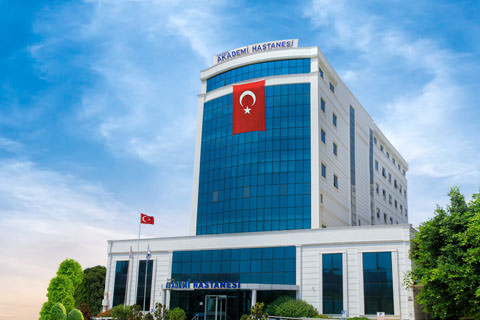Neurology
Polyclinic service is provided in our hospital regarding all diseases that are in the field of Neuroscience Department. In addition, the patient is monitored in neurology service and intensive care in case of necessity.
Computed tomography (CT), magnetic resonance imaging (MRI), Karotis-vertebral artery Doppler USG, EEG and EMG are used in the diagnosis and follow-up of neurological diseases in our hospital. In addition, the polysomnography (PSG) device used for the diagnosis and treatment of sleep disorders (snoring and shortness of breath syndrome, etc.) will be available soon so that we can help our patients with sleep disorders.
Movement Disorders:
- Parkinson's Disease
- Wilson's Disease
- Huntington's Disease
- Dystonias
- Dyskinesia
- Essential Tremor
- Restless leg syndrome etc
En Etkili Migren Tedavileri
Ayda 4'ten Fazla işinizi bırakacak şiddette ağrı yaşatıyorsa DUR! demeniz lazım. Bunun için Nörolojiye gitmek şarttır.
- Ağrı günlüğü tutun.
- Tetikleyicilerden uzaklaşın (Uykusuzluk, susuzluk, sigara, şarap, açlık)
- Migrenden koruyucu günlük haplara başlayın ve saati saatine kullanın, atlamayın (zaten beş çeşit, biri olmazsa biri etkiler)
- Hap fayda etmezse migren aşısı, migren botoksu, migren sinir blokajı yapılabilir.
Demyelinating Disease
- Multiple Sclerosis
- Acute demyelinating Encephalomyelitis
- Transverse myelitis
Polyneuropathies:
- Toxic polyneuropathies (depending on alcohol use, lead poisoning, etc.)
- Metabolic neuropathies (due to diabetic mellitus, due to liver failure, etc.)
- Immunostaining
- Hereditary polyneuropathies
- Guillen Barre syndrome
Muscle diseases
- Polymyositis-dernatomyositis etc
- Nerve muscle junction diseases
- Myastenia Gravis
- Amyotrophic lateral sclerosis, etc.
Examinations öade at neurology department in our hospital:
What is EEG (electroencephalography)?
EEG is the abbreviation of the Electro-Encephalogram.
Our brain produces a continuous electrical current of very low intensity and emits the waves regularly. EEG is the process of recording these waves in a computer environment. The electrical signals of nerve cells in the brain tissue are transmitted to the scalp on the skull. These signals are transmitted to the computer by electrodes placed in certain areas of the scalp. The transmitted signals are evaluated by a neurologist who is trained in this field. It can be likened to a heart electroshock (ECG). In contrast, more and more shots are taken from more points and longer periods of time.
EEG examinations have no side effects. During EEG, only electrical waves of the brain are recorded, and no electrical energy is supplied to the body.
For which causes EEG is carried out ?
- Sara (Epilepsy) disease,
- Consciousness and perception disorders,
- Forgetfulness, attention disorder and dementia,
- Some psychiatric disorders,
- Sleeping disorders,
- Coma, in the diagnosis of brain death
- Inflammation of the central nervous system (meningitis, encephalitis, etc.)
How is EEG done?
For the purpose; the way of the study is planned as routine EEG, short-term sleep EEG, or all-night sleep EEG, video-EEG imaging. The electrical conductivity of your skin is important because electrodes will be attached to your body and scalp in the procedure. Therefore, it is important that your hair is clean and washed. After washing your hair; hair conditioner, hair spray, jelly should be applied.
What is EMG and how it is carried out?
EMG is an acronym for electromyography.
EMG means printing electrical signals from nerves and muscles.
EMG is an examination method used to diagnose, verify diagnosis, determine the severity of dysfunction or structural damage, monitor the disease process, and evaluate the effect of the treatment applied.
Different tests can be applied to the patient in EMG examination. The most commonly used tests are nerve conduction studies and needle EMG” test.
Nervous TransmissionStudies
During the EMG examination, the stimulating electrodes attached to the skin and the electrical impulses given to certain points of the nerves and the signals in these nerves are revealed. This signal is recorded by recording electrodes placed on the skin. If the disease is diagnosed at this stage, the second stage is the needle EMG examination.
Needle EMG
This process is carried out in order to dip a special recording electrode called needle electrode into the muscle tissue and record electrical signals on the muscle fibers. The signals produced by muscle fibers during the contraction of light are evaluated. If the disease is found in the body, or in the case of a common disease, information about the degree of spread of the disease is obtained.
When is EMG done?
- Nerve injuries (nerve cut, traffic accidents, firearm wounds, etc.)
- Nerve compression (carpal tunnel, tarsal tunnel etc.)
- Diagnosis of neck and lower back hernias
- Spinal cord diseases (such as polio)
- Investigation of the effects of diseases that can impair the functions of nerves (diabetes, kidney disease, etc.) on the nerves,
- Facial paralysis diagnosis and follow-up
- Diagnosis of muscular and nervous-muscular junction diseases (myastinum, myopathy, etc.)
- For spinal cord diseases (ALS, polio etc.) caused by muscle melts, diagnosis and treatment is applied.







